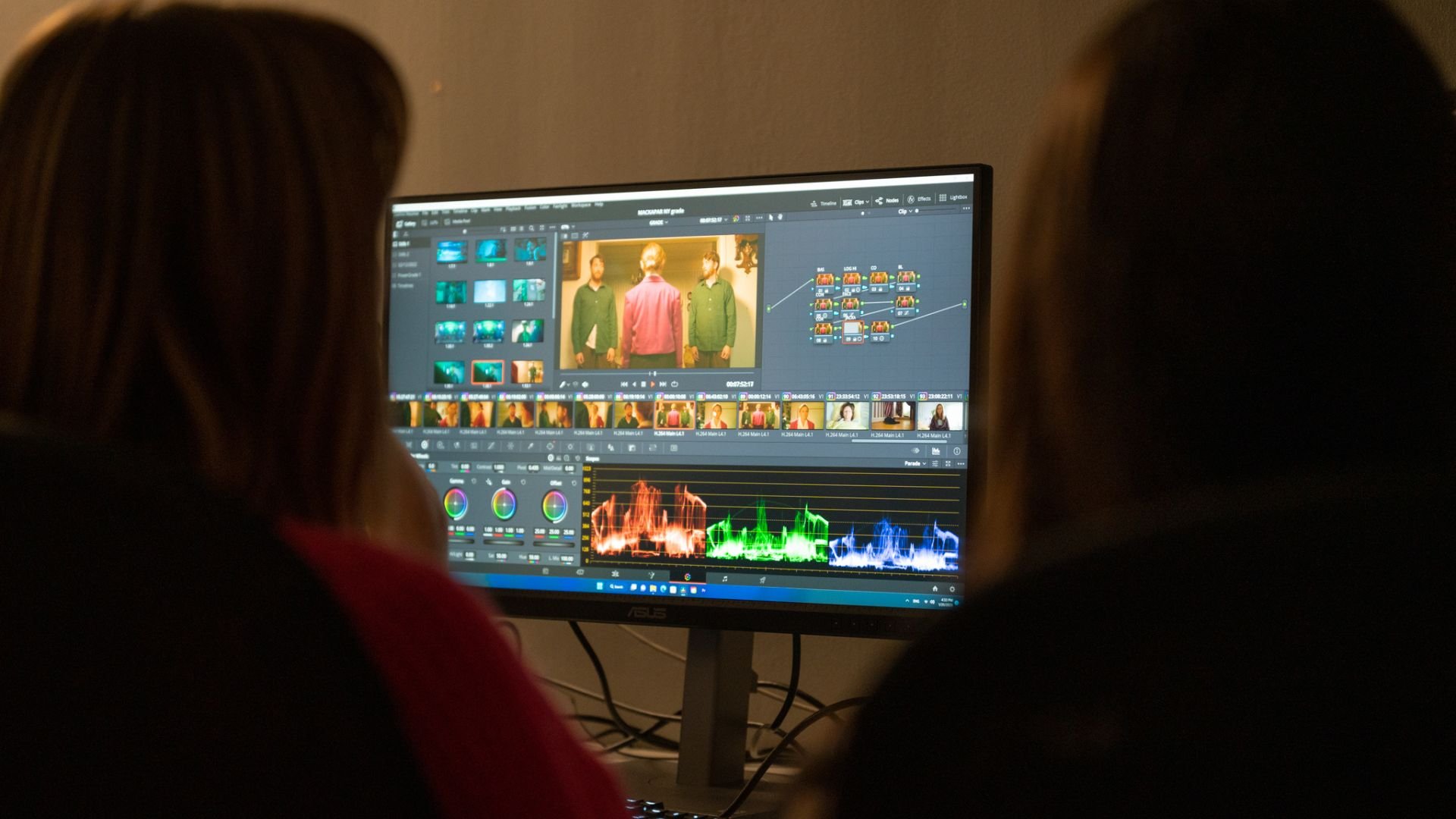
RedShark visited one of the largest practical schools in Stockholm, Sweden. Let's take a look what makes this school special and how ASUS ProArt helps it master the art of practical filmmaking.
The Stockholm Method
Stockholm Film School takes pride in its diversity and inclusion; to the point where it can say it is the only gender-equal film school in the world. Founded in 1984, it offers an education that focuses entirely on practical filmmaking. Its unique model, 'The Stockholm Method', combines world-class educational content and targeted master-apprentice training where students learn by doing before analyzing what has been done together with industry professionals. This means that students will master the language of the film after participating in over 12-15 short film productions.
Challenges in technology-driven industry
As an industry school, Stockholm Film School focuses on the technical craft of filmmaking. Students go from an idea to a screenplay, to on-set work, and to post-production, where technology is an integral part of their learning process. To master the craft of practical filmmaking, the students need to understand the equipment they use and what the standards are when it comes to image quality. Therefore, the school needs to ensure that all of its studios and editing suites provide top industry-standard equipment to teach its students the practical skills that the industry demands.
“The industry is becoming more and more technology-driven and for us as an industry-driven school, it is more important than ever to be in line with what the industry requires,” comments Anders Rune, Head of School at Stockholm Film School.
Stockholm Film School working on ASUS ProArt PA279CV
Reduced rendering times
Stockholm Film School’s Technical Manager, David Marquez, mentiones how its students ask him if the workstation is actually on because it is not making any noise. “It is so reliable”, he says.
After receiving the Dator I Delar Workstation powered by the ASUS ProArt motherboard, Stockholm Film School noticed a huge improvement in processing speeds. Student rendering time in post-production was reduced more than 50%. They can also now render in 4K, which means the school can really push its students to produce the highest quality work as much as possible.
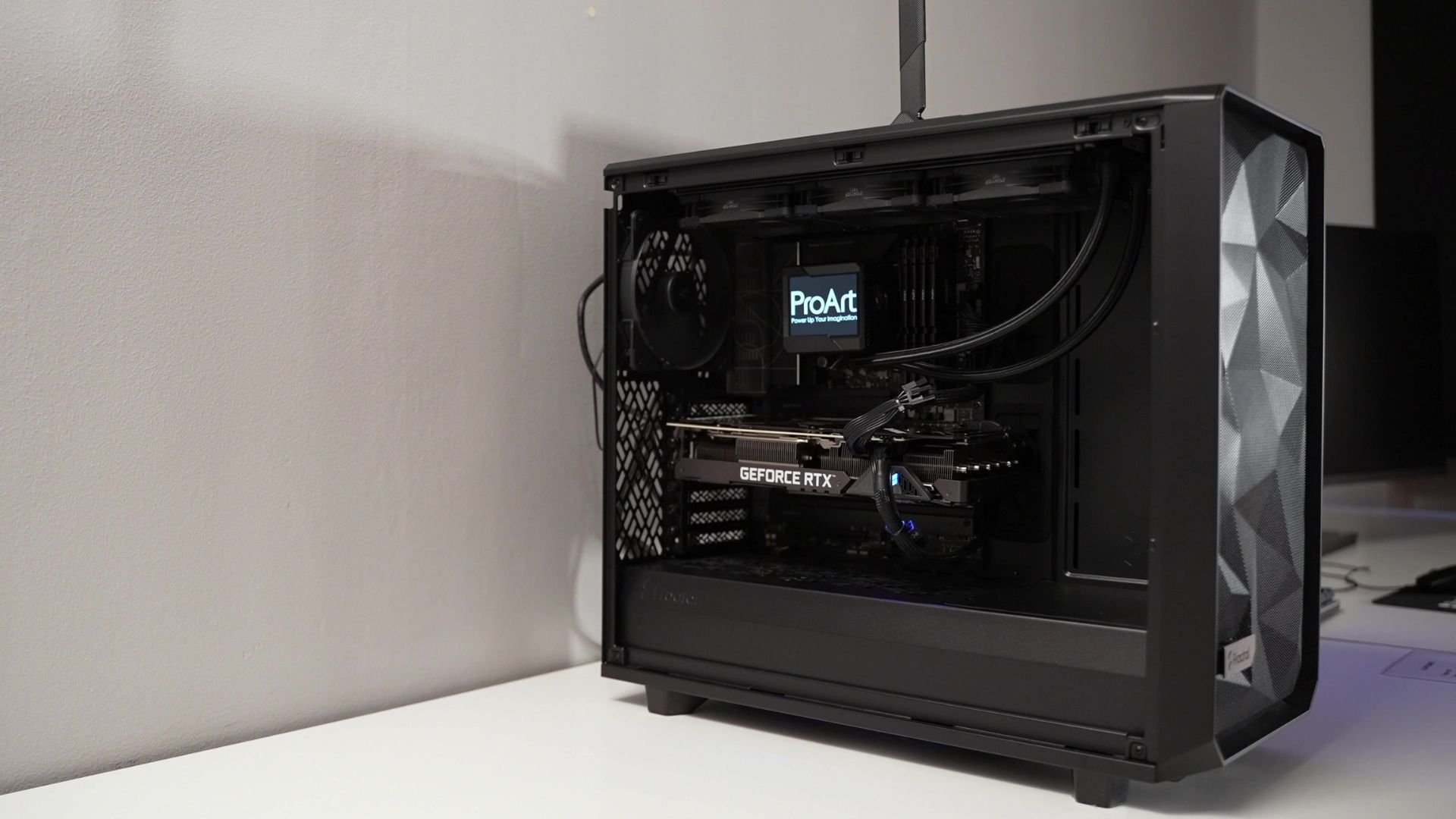
Dator I Delar Workstation powered by the ASUS ProArt motherboard
Fully calibrated grading suite
Stockholm Film School also installed the ASUS ProArt PA32UCG monitor in its grading suite. The display comes with true 10-bit color and 98% DCI-P3 color spaces enabling the students to finish their work according to industry standards. The 120Hz refresh rate makes viewing experiences smooth and efficient. Since the monitor has 1000nits sustained brightness, and peaks up to 1600nits, students are seeing every detail of the image shown in the monitor, which is helpful when working in HDR.
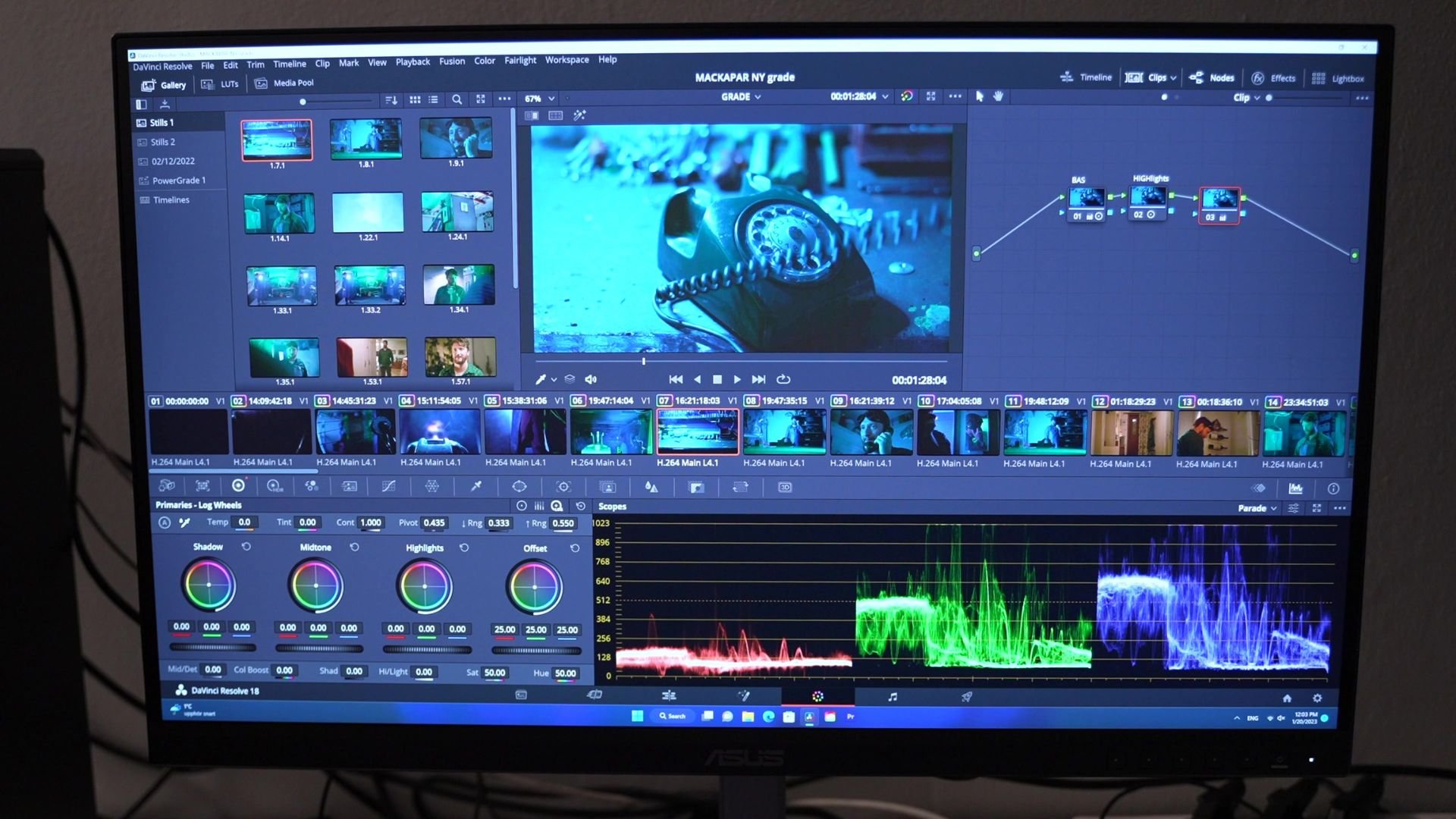
ASUS ProArt PA32UCG
The second monitor in the grading suite is the ASUS ProArt PA279CV. The display has a flicker free, low blue-light technology, which enables the students to be able to edit as long as needed without any eye strain when finishing their projects.
“The first time I used the ASUS ProArt monitor it was very interesting to see how my short looked in that monitor compared to other computers and monitors in the past. It was very nice, the quality was very good, and the colors looked very real,” says Greta Fatzie, a Practical Filmmaking Programme Student at Stockholm Film School.
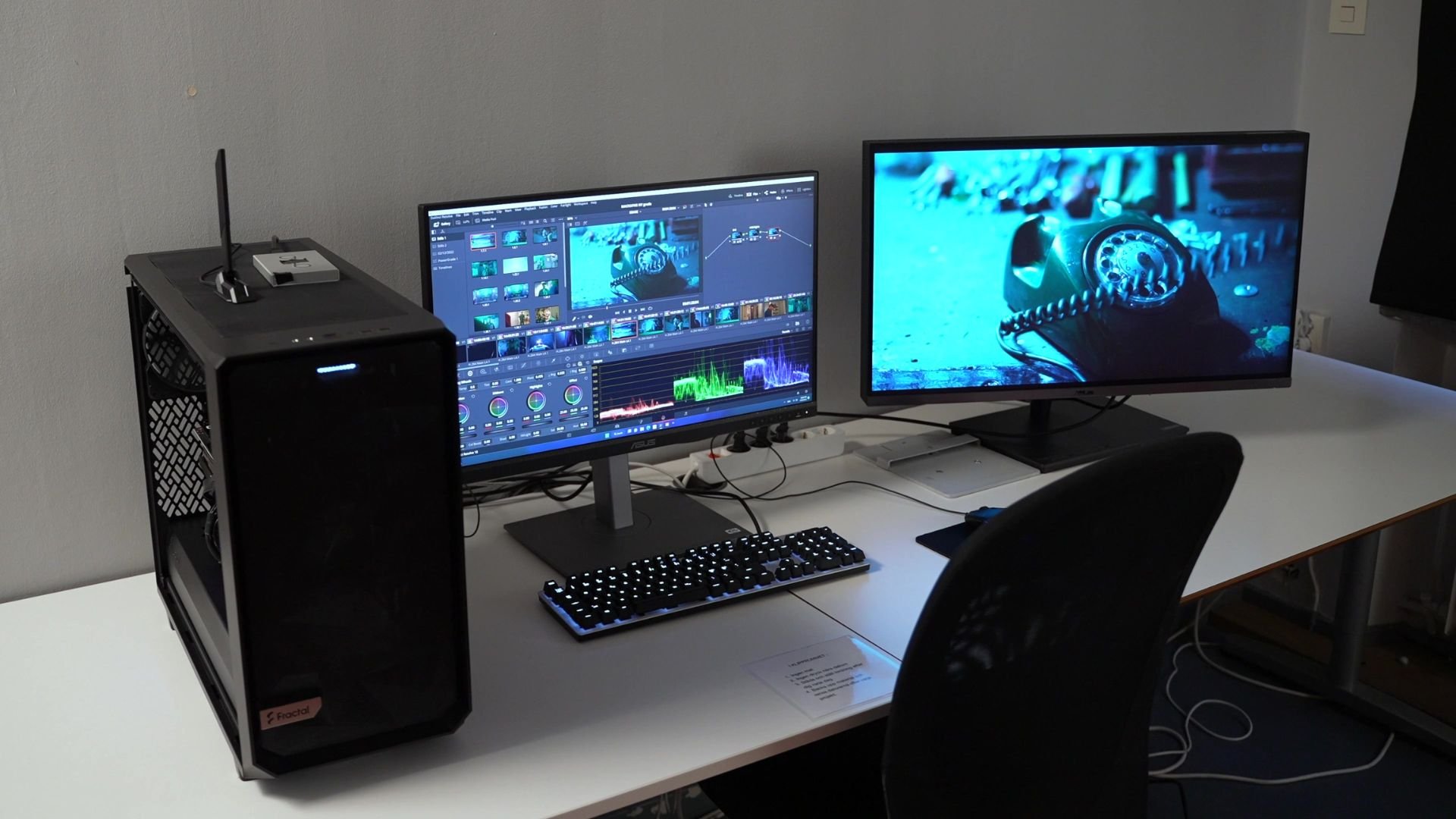
Stockholm Film School's grading station powered by ASUS ProArt
Reviewing work on a larger canvas
Stockholm Film School has installed the ASUS ProArt A1 projector in its cinema room. Having a projector that features 98% sRGB and is Calman Verified enables the students to review their work on a larger canvas while being assured that the colors are staying consistent throughout their grading process to the final review. “The movies and the shorts that we do, they end up being very professional thanks to the technology that we use,” says Fatzie. “And the good thing here is that we could see it on the projector in the cinema, and then go back to the grading station and fix up what we didn't like.”
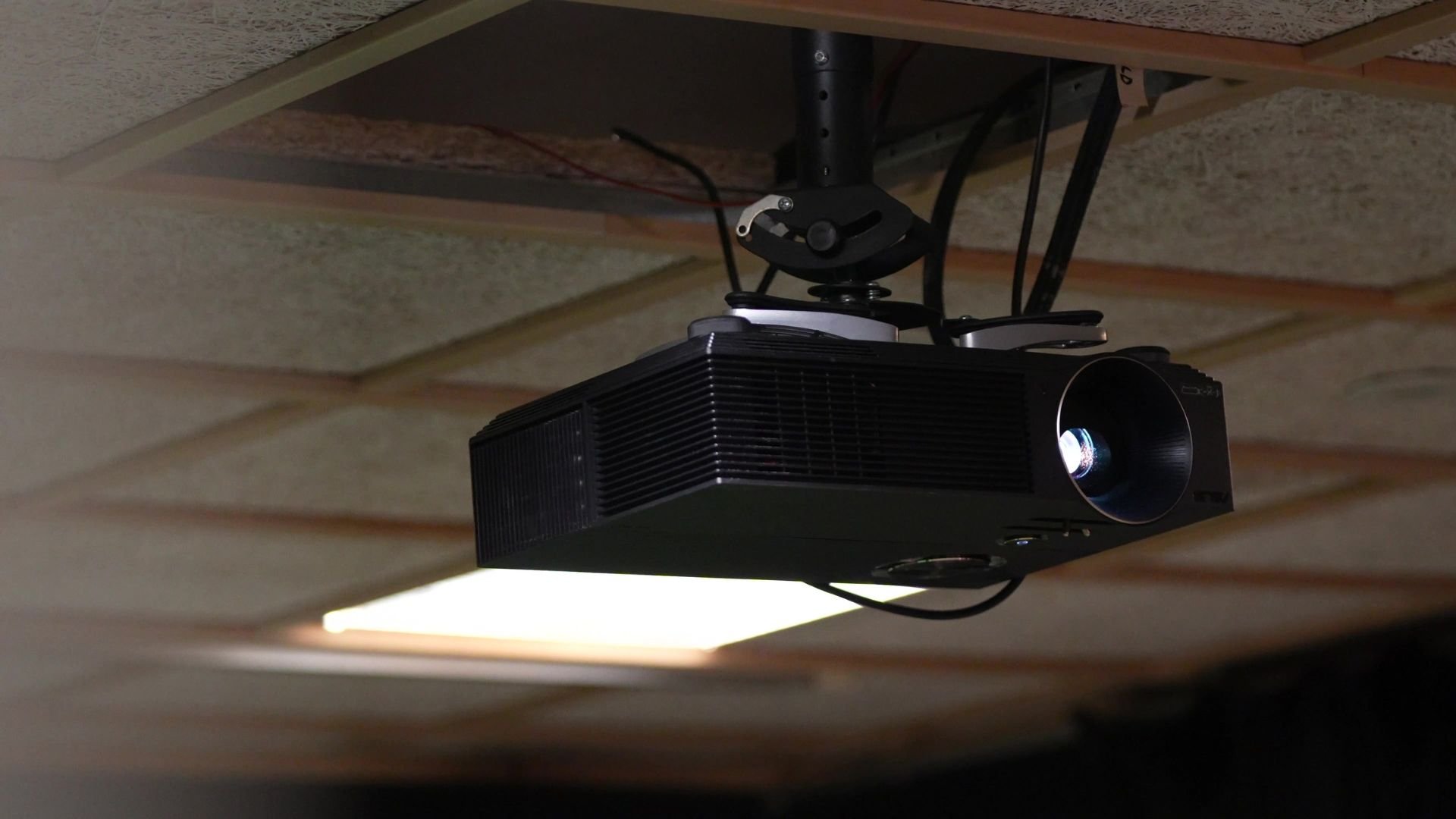
ASUS ProArt A1 projector in action
Outcome
With the right industry-standard technology, the school can now teach its students the qualities that the industry is looking for and the standard they should be looking to reach once they graduate. “ASUS has put us in a situation where we have a fully calibrated color grading station that works perfectly with our cinema projectors,” says Rune. “This means our cinematography department can really teach the students how image behaves from 4K up to 8K.
“We are really looking forward to working with the team at ASUS in the future.”
Tags: Technology Production Education
c534.jpg)


Comments